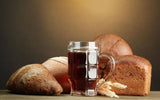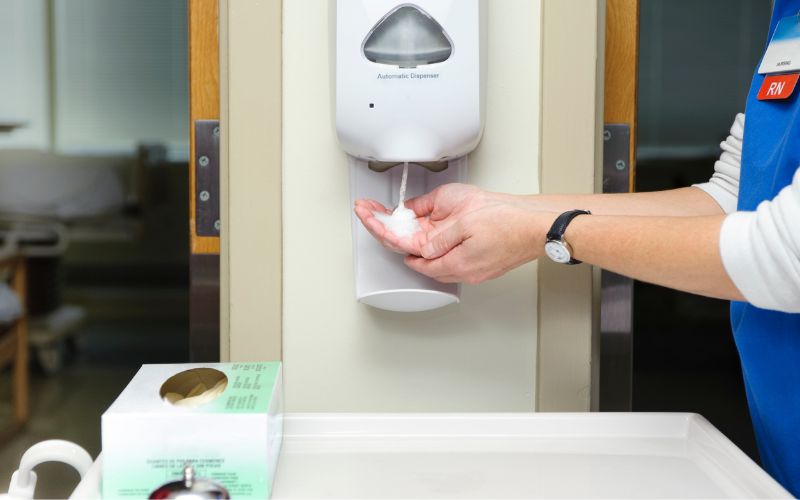
Turning Leftovers into Beer: Is it Safe?


Bread is one of the most common food items in the world, but it can also be one of the most wasted. According to the Food and Agriculture Organization of the United Nations (FAO), nearly one-third of all food produced for human consumption is lost or wasted each year. Leftover bread in particular is one of the biggest contributors to this problem, but it doesn't have to be.
One innovative solution to reducing food waste is turning leftover bread into beer. However, the question arises: is it safe to turn leftover bread into beer? The short answer is yes, it is safe to turn leftover bread into beer, as long as you follow proper sanitation and brewing practices.

Historically, beer has been brewed with a variety of grains, including bread. Some of the earliest beers were made from bread and it was a common practice in many parts of the world for centuries, from Egypt to Mesopotamia.
In ancient Egypt, beer was considered a staple beverage and was consumed by people of all social classes. Bread was the primary ingredient in their beer-making process, which involved fermenting the bread in water and then straining the mixture to remove any solid material.
The Mesopotamians and Sumerians also used bread in their beer-making process, but they took it a step further by adding various other ingredients, ranging fruits, herbs, and spices to create unique flavors. These two civilizations were also among the first to develop a written recipe for beer-making, which was found on a Sumerian tablet dating back to 1,800 BCE.
During the Middle Ages in Europe, bread was again used as a primary ingredient in beer-making. Monks in monasteries would brew beer using leftover bread from their daily meals as a way to minimize waste and generate income for their communities.
According to food safety lawyers at The Lange Law Firm, PLLC, turning leftover bread is generally safe and there are various modern breweries in the United States and abroad that leverage this innovative practice to help reduce food waste: Toast Ale (England), Adnams (England), Lox Up Your Daughters (USA) and East End Brewing Company (USA) are just a few.

While it is generally safe, there are some potential safety concerns to consider when brewing beer from leftover bread. The biggest concern is the risk of contamination from bacteria, such as Listeria monocytogenes and salmonella, and other microorganisms.
Bread is a food item that can easily become contaminated with bacteria, especially if it is not stored properly. If the bread used in the brewing process is contaminated, it could lead to spoilage or serious illness.

To minimize the risk of contamination, ensure the bread is fresh and has been properly stored; bread that is moldy or has a strange odor should not be used in the brewing process. It is also important to sanitize all equipment used in the brewing process, including pots, utensils, and fermentation vessels. Solution of bleach and water or a commercial brewing sanitizer can be used to sanitize all instruments.

Another potential safety concern when brewing beer from leftover bread is the alcohol content. Bread is not a traditional brewing grain, so it may not have the same level of fermentable sugars as other grains used in brewing. The result is a lower alcohol content beer, which may be more susceptible to spoilage. To ensure a safe and stable final product, it is important to monitor the fermentation process carefully and take steps to promote healthy yeast growth.
It is also important to note that not all types of bread are suitable for brewing beer. Some types of bread, such as those with high levels of sugar or preservatives, may not be suitable for brewing. It is best to use simple, basic breads such as white or wheat bread for brewing beer.

The first step in making bread beer is to collect your bread. Any type of bread will work, but sourdough, rye, and whole wheat bread are good options. The bread should be stale, but not expired or spoiled.
You may also place the bread in the oven for an hour at 194 degrees Fahrenheit to dry.

The next step is to create a mash. To do this, you'll need to break the bread down into small pieces and soak it in hot water. Heat water to 150 degrees Fahrenheit, and leave to soak for about an hour. Once soaked, strain out the water and set it aside.

After creating the mash, the next step is to add hops. Common choices include Cascade, Centennial, and Chinook, but any type of hops will work.
To add hops to the mix, bring the water from the mash to a boil and then add. Hops should be left to boil for about an hour, which will extract the bitterness and flavor. Once the hops have boiled, strain and discard.

To add yeast, cool the mixture from the hops to about 70 degrees Fahrenheit then add. The yeast should be left to ferment for about two weeks, which will give the beer its alcohol content and carbonation.
Any type of yeast will work well, but common options include Safale US-05 and Wyeast 1056 American Ale.

Once the fermentation process is complete, it's time to bottle the beer and enjoy! To do this, transfer the beer into bottles using a siphon or funnel. If possible, avoid pouring the beer as it will add oxygen and spoil the beer.
After bottling your beer, you can enjoy! Bread beer has a unique flavor that is different from traditional beer, usually noted as having a slightly sour taste and a bread-like aroma. It's a great way to use up leftover bread and create something new and delicious.

Brewing beer from bread is safe as long as proper sanitation and brewing practices are followed. Despite the potential safety concerns, brewing beer from leftover bread is a great way to reduce food waste and create a unique and flavorful beer. It is a sustainable and eco-friendly practice that can be done at home with minimal equipment.
Brewing beer from leftover bread can be a fun and creative way to experiment with different flavors and styles of beer.
If you are interested in brewing beer from leftover bread, be sure to do your research and follow best practices to ensure a safe and successful brewing experience. The next time you have some stale bread lying around, don't throw it away. Turn it into beer and enjoy the fruits of your labor.

Samantha Larson is health and safety writer and often works in conjunction with injury experts to help inform the online community about life-changing safety tips.

